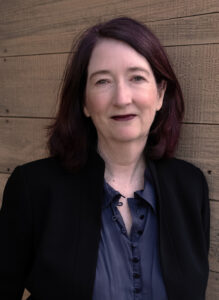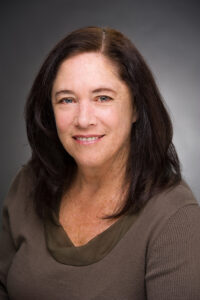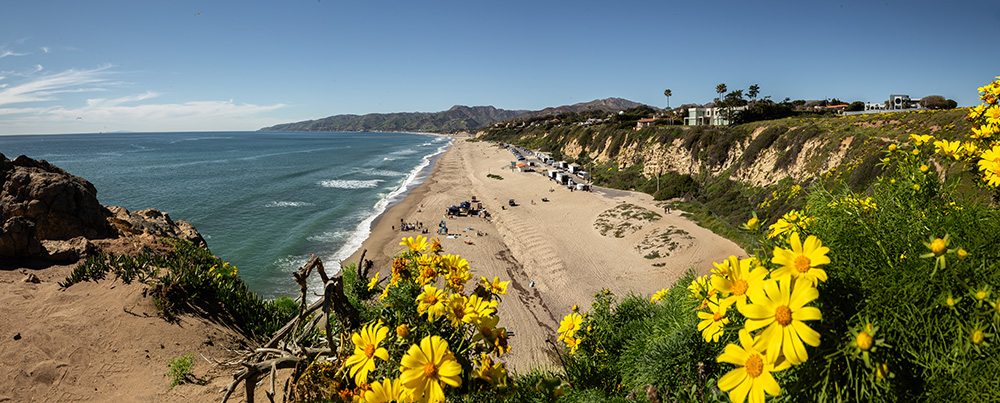California’s Simmering Cauldron: The Dowry of the Dragon Lady
Adorned with moderate coastline temperatures, golden beaches, plush, vibrant blue waves, towering cinnamon-colored Redwood trees, and sunny skies, California’s seductress’ appointments lure in and keep many people in the Golden State because they sense it’s nirvana.
Embodying cunning, deceit, mastery, and power, especially as it unleashes merciless wildfires, California can morph into something unexpected – an infamous, testy, and ruthless character – The Dragon Lady – from the classic comic strip “Terry and The Pirates.”
As some experts see it, Californians, whether native or settler, better accept the latter – and knuckle down.
“It’s no longer dreamy California, and every day is sunshine on the beach, and life is grand,” said Nancy Watkins, a San Francisco-based insurance consultant with Milliman. “There are real risks to living here, just like in any other state.”

As she sees it, January’s Los Angeles-area wildfires that killed at least 28 people, destroyed thousands of homes and commercial properties, and, at one point, displaced about 200,000 people “is a wake-up call that we need to do a better job of preparing communities to receive fire. And if we were to do those things, the insurance market would take care of itself,” referencing the nearly 3 million Californians whose insurers canceled or declined to renew their homeowner’s policies between 2020 and 2022, much of it due to wildfire threats.
The question, says Watkins, isn’t whether the insurance industry will remain solvent and pay out its claims. It’s the willingness of Californians to face reality and harden their homes against wildfires.
“Is this going to make any difference in our political will to align around real mitigation, like defensible space around houses and putting in new construction that’s very, very resilient to wildfire so that when a fire does ignite, it doesn’t pour right into the houses and start catching them all on fire?” she said. “That’s my wake-up call.”
If there’s a testament to hardening a home against fire, it might be David Steiner’s Malibu beach house, which, unlike his neighbors’ homes, survived the recent fire. The concrete structure, the Los Angeles Times reported, includes a fire-resistant roof and tempered, double-paned windows.
But there’s more to the story than just hardening homes: It’s California’s willingness to manage its landscape the way it was designed, one former fire chief says.
Damage Costs & The FAIR Plan
Damage estimates are varied and extreme, with Irvine, Calif.-based CoreLogic, a global property information provider, saying residential and commercial damage could be as high as $45 billion.
State College, Pa.-based AccuWeather, a forecaster, however, estimates higher, saying it’s between $250 billion to $275 billion in damages and economic losses, greater than the $225 billion to $250 billion in damages and economic losses from last September’s Category 4 Hurricane Helene that cut a 600-mile swath of destruction from Florida’s Gulf Coast into Georgia, South and North Carolina and Tennessee.
Artemis, a U.K.-based media outlet covering the global insurance industry, says over 17,000 structures were damaged and the insured losses to cover those structures, whether in the FAIR Plan or outside of it, are estimated at $32.5 billion. Artemis reports the FAIR Plan could have $5.3 billion in exposure – the total amount of money it could lose if every home it covered was lost – to these recent fires.

Janet Ruiz, a spokesperson for the Insurance Information Institute, says recent estimates from the fires around Los Angeles are too early to be accurate.
“You have to know exactly what’s insured, how much it’s insured for,” she said. “And what the insurance companies do is they look at the areas. They can tell when they see catastrophe coming or starting.
“They’ll look at how many policies they have so they know their maximum exposure,” Ruiz added.
The fires have prompted concern about the viability of the California FAIR Plan, the insurer of last resort for wildfire damage and threats. About 1,400 homes in upscale Pacific Palisades, according to media reports, are covered by the FAIR Plan. There are about 9,000 residential properties in Pacific Palisades.
“That community had one of the highest percentages of non-renewals in the past year due to insurance carriers pulling out of the area or no longer offering fire insurance,” said Rick Sharga, CEO of Irvine, Calif.-based CJ Patrick & Company, a market intelligence company for real estate and mortgage companies. “It seems likely a disproportionate number of those homes were in the FAIR Plan, which would put even more stress on the system.”


During a State Assembly hearing last March, San Diego State Sen. Brian Jones’s office told SD METRO, FAIR Plan President Victoria Roach reported it had $700 million in cash.
As the Senator’s office explained, if the FAIR Plan cannot cover its liabilities, it will tap into its reinsurance policy. If the money from reinsurance doesn’t cover the claims, insurance companies writing homeowners policies in the Golden State will split the cost up to $1 billion. If that still does not cover it, insurance companies will cover the rest but can pass on 100% of additional costs to policyholders.
In other words, the consequences could be felt by every Californian with a homeowner’s insurance policy, Jones (R-San Diego) warned.
The change in policy was announced by State Insurance Commissioner Ricardo Lara on July 26, 2024.
“Despite Republican lawmakers’ pleas to fix California’s insurance market and the FAIR Plan for years, Governor Newsom, Insurance Commissioner Lara, and Democrat lawmakers refused to sit down and do the work until just last year,” said Jones, the State Senate’s minority leader.
“Waiting this long leaves us now with the current system waiting for major reforms to take effect and could result in the total failure of the insurance market during these catastrophic events like those we are seeing in Los Angeles.
“Sadly, if the FAIR Plan collapses, every Californian will be paying the price with a surcharge on their homeowner policies to cover the state’s failures to act,” he added.
SD METRO’s emails seeking comment about the FAIR Plan from State Senate’s leading Democrat, President Pro Tempore Mike McGuire, were not immediately returned.
In a statement emailed on Friday night, the FAIR Plan said “about 22% of the structures in the Cal Fire incident map for the Pacific Palisades Fire are covered by the FAIR Plan, and approximately 12% of the structures in the Cal Fire incident map for the Eaton Fire are covered by the FAIR Plan.
“The FAIR Plan has a total potential exposure of over $4 billion for the Pacific Palisades Fire, and a total potential exposure of over $775 million for the Eaton Fire, according to the CAL FIRE incident maps. These numbers are developing as more information is gathered,” FAIR’s statement said.
The FAIR Plan also said “that ‘exposure’ does not equal ‘loss.’ Exposure means the total amount of insurance for a particular property or group of properties. It does not equate to the number of claims made or the anticipated claims and expense payments related to those claims.”
The FAIR Plan said it received more than 3,600 claims when it sent the statement.
As to the FAIR Plan’s financial ability to pay its claims, FAIR said, it “is able to access reinsurance once the first $900 million in claims are incurred, similar to meeting a deductible. Reinsurance can be fully accessed for the next $350 million of claims payments, subject to certain conditions. After this initial $1.25 billion, there are various levels and percentages of co-insurance (similar to a co-pay percentage) between reinsurance and the FAIR Plan or admitted market insurers – up to a total of $5.78 billion, shared between reinsurers and the FAIR Plan, subject to certain conditions.”
Ruiz also confirmed that insurance carriers writing homeowners policies in California are required to refill the coffers of the FAIR Plan.
The Insurance Journal reported the FAIR Plan has $2.5 billion in reinsurance coverage, but it includes a $900 million deductible.
SD METRO’s phone calls and emails to the FAIR Plan seeking clarification and confirmation about its finances and exposure to the Los Angeles-area fires were not immediately returned.
The Insurance Point of View
SD METRO reached out to multiple insurance companies about their exposure in the Los Angeles area. Those who spoke did so on background, requested anonymity, or sent a statement.
If the insured losses tally up to between $30 to $50 billion, the wildfires in and around Los Angeles could be considered a global catastrophe by reinsurance industry standards and would likely result in homeowners insurance companies being assessed higher premiums for reinsurance and potentially passing those increased costs onto their policyholders.
“Rising temperatures and prolonged drought conditions dry out vegetation, making it highly flammable and susceptible to ignition, which, combined with increased wind speeds like we are now seeing with the Santa Ana winds in southern California, allows wildfires to spread faster and farther,” said Munich RE, a reinsurer based in Princeton, N.J., in a statement emailed to SD METRO. “We remain committed to providing natural catastrophe capacity across all markets, as long as we can achieve prices that adequately reflect the risk, which ultimately is what makes it possible for us to pay our clients in case of claims.”
Global temperatures, reports the National Aeronautics and Space Administration, in “2024 were 2.30 degrees Fahrenheit above the agency’s 20th-century baseline (1951-1980), which tops the record set in 2023.”
It’s also possible, given the number of homes destroyed in this last round of fires, and the exposure insurance companies could face, that some will further curtail or stop writing homeowners policies in California.
But that could be risky, insurance insiders say, because it would increase an insurance company’s exposure to other parts of the country, like the Midwest and the South, which have severe convective storms, or Florida or parts of the Gulf Coast or Eastern Seaboard, which can experience damage from hurricanes.
A more likely scenario, say some insurance executives, is that insurers may implement requirements on California homeowners, requiring them to mitigate for fires around their property, including removing brush near the home and replacing bark and plants near or around the house with stone gardens. In addition, roofs will need to become fire-resistant and wooden fences less than five feet from a home may need to be removed.
“If you reduce or eliminate combustive material – wooden fences and plants and other vegetation – within five feet of a house, you see a significant reduction in a house becoming vulnerable to a fire,” said Dave Winnacker, until recently the chief of the Moraga-Orinda Fire District, located in southwest Contra Costa County. “The science is crystal clear and has been researched by the National Institutes for Science and Technology and the Institute for Business and Home Safety.”
He added “the state legislature passed a law in September 2020 that directed the California Board of Forestry and Fire Protection to establish a regulation for zone-zero area no later than January 1, 2023. That regulation has not been published so far.”
Assembly Bill 3074 requires people who own, lease, control, operate or maintain an occupied dwelling “to maintain a defensible space of 100 feet from each side and from the front and rear of the structure … with more intense fuels reductions being used between 5 and 30 feet around the structure.”
SD METRO’s phone calls to the Board of Forestry and Fire Protection about the regulations were not immediately returned.
“Until we carry out the hardening and defensible space and community risk reduction measures, too many homes will burn,” Winnacker said.
“The intrinsic value is to bring the risk down – not because an insurance company is going to decrease premiums dollar for dollar for every cent spent on mitigation, although that’s the way that people tend to think,” said Milliman’s Watkins. “It has to be because you want to live through a fire that erupts somewhere in your vicinity. You have to want your neighbors to live and your house to remain standing.”
Across the country, premiums for homeowners insurance policies, Barron’s reports, continue to rise, increasing 33% between 2020 and 2023, from $1,902 to $2,530.
“The increase parallels the surge in billion-dollar natural disasters. In the 1980s, the U.S. suffered an average of just 3.3 disasters a year with costs in excess of a billion dollars. But from 2022 to 2024, the number of disasters of that magnitude averaged 24.3 a year, according to the National Oceanic and Atmospheric Administration,” Barron’s reports.
The average premium for a homeowner’s policy on a $300,000 house in California, reports Bankrate, is $1,381 a year. In the neighboring states, the annual average cost to insure a $300,000 home is $2,099 in Arizona; $995 in Nevada; and $989 a year in Oregon.
Nebraska is the costliest state to insure a $300,000 home at $5,401, due to tornadoes, hail and thunderstorms, says Ruiz, followed by Florida at $5,376, says Bankrate.

California’s Ecosystem
What ignited the fires started hasn’t been determined. News reports say the Eaton fire may have started at the base of a transmission tower owned by Southern California Edison, while the Pacific Palisades fire may have ignited due to a fire on New Year’s Eve, which started again.
As SD METRO was finalizing this story, it was unknown what caused the Hughes fire north of Castaic in northern Los Angeles County, which broke out on Wednesday, Jan. 22, at about 2 p.m. and closed I-5’s northbound lanes or if there were any casualties. Evacuations were ordered and the fire spread over more than 5,000 acres, media outlets said.
As reported earlier by SD METRO, homes next to what’s named the Wildland Urban Interface (WUI) – basically a forested area – are at higher risk of being damaged or destroyed by fire. And in many cases, fires are started by people.
The larger issue Californians need to understand, Winnacker says, is the Golden State’s ecosystem: It’s a fire-dependent landscape.
“”Fire is not a bug. It’s a feature,” he said.
“When you take a fire-dependent landscape, and you remove fire from it, essentially you remove the natural stabilizing element that keeps that ecosystem in balance. And when you allow an accumulation of combustive fuels and vegetation that can act as a fuel, it’s going to burn,” he added.
In other words, fire is the primary environmental and ecological way California maintains balance in its vegetative landscapes because it eliminates the vegetation that builds up, becoming the fuel that ignites the next wildfire.
This means, he says, California needs to look at ways to implement controlled burns on its forested landscape.
“In a rainforest, decay is how things are turned over or restored,” Winnacker said. “In California, fire is the balancing mechanism for the landscape.”
“Early explorers to California regularly made reference to smoke-filled skies in the summers and fall because there were fires burning on the landscape when that landscape was in balance,” he said.
“A great deal of innovation and technology and funding has gone into developing solutions that further the exclusion of fire,” he continued. “And if you talk to anybody worth their salt, they will say that the exclusion of fire is a large part of how we got here.
“This is going to get worse if we continue to exclude fire from the landscape and continue, as a community and as a public, to demand a fire-suppression approach,” Winnacker added. “In addition to restoring beneficial fire to the landscape, we also need to retrofit existing communities so they’re capable of being in or adjacent to a fire without experiencing loss.”
The Dragon Lady – Tribune Content Agency, LLC.
Doug Page is reachable at dpage@sandiegometro.com


